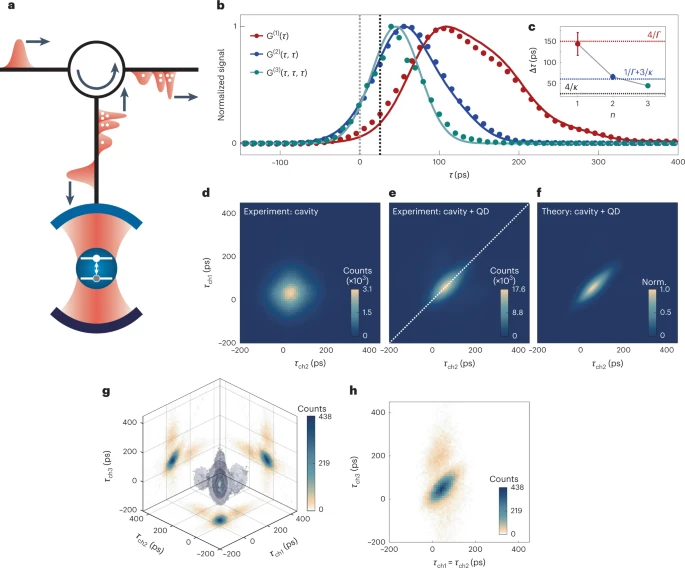Nanowerk March 20, 2023
The nonlinearity provided by the atom leads to a strong dependence of the light–matter interface on the number of photons interacting with the two-level system within its emission lifetime. This nonlinearity unveils strongly correlated quasiparticles known as photon bound states, giving rise to key physical processes such as stimulated emission and soliton propagation. Although signatures consistent with the existence of photon bound states have been measured in strongly interacting Rydberg gases their hallmark excitation-number-dependent dispersion and propagation velocity have not yet been observed. An international team of researchers (Switzerland, Australia, Germany) has reported the direct observation of a photon-number-dependent time delay in the scattering off a single artificial atom. By scattering a weak coherent pulse off the cavity–quantum electrodynamics system and measuring the time-dependent output power and correlation functions, they showed that single photons and two- and three-photon bound states incur different time delays, becoming shorter for higher photon numbers. This reduced time delay is a fingerprint of stimulated emission, where the arrival of two photons within the lifetime of an emitter causes one photon to stimulate the emission of another… read more. Open Access TECHNICAL ARTICLE

Photon-number-dependent pulse scattering. Credit: Nature Physics (2023)